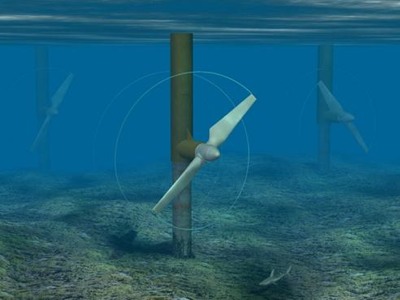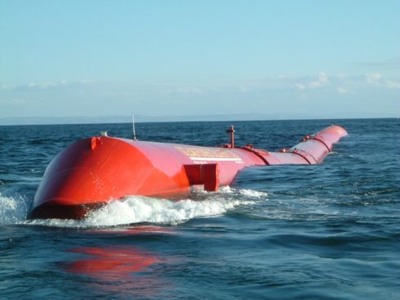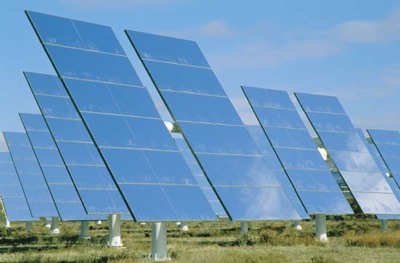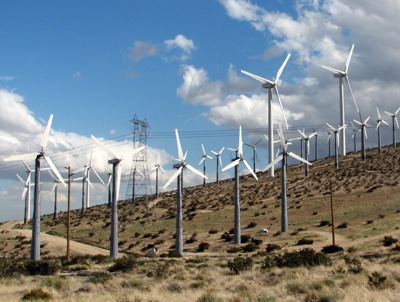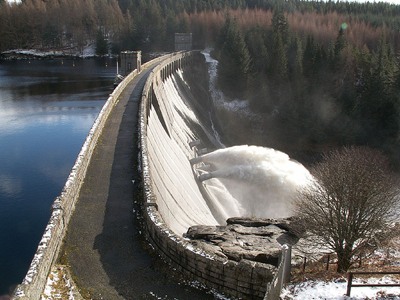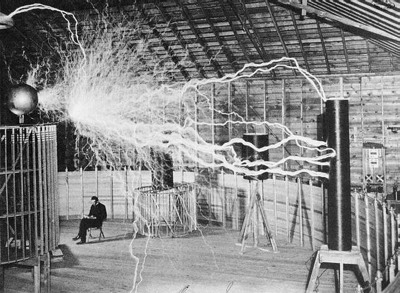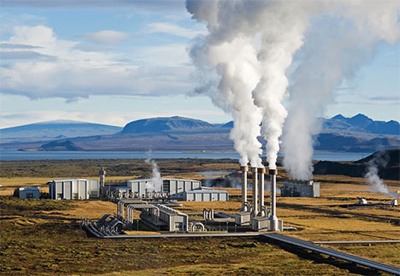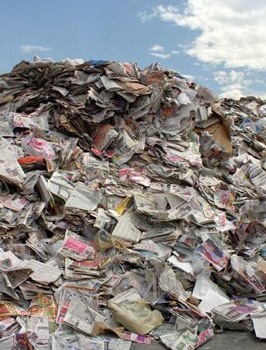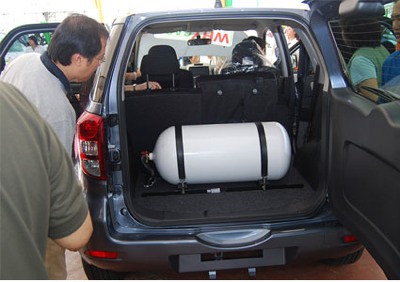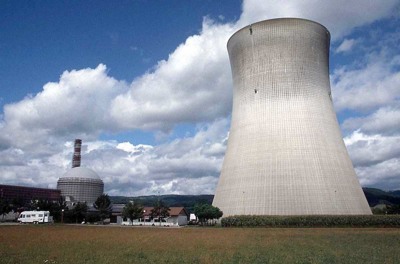 Weird Stuff
Weird Stuff  Weird Stuff
Weird Stuff  Mysteries
Mysteries 10 Tragic Disappearances and Deaths in Joshua Tree National Park
 History
History 10 Ways Childhood Really Sucked in the Old West
 Music
Music 10 Name Origins of Famous Bands from the 1990s
 Religion
Religion 10 Biggest Turnarounds by the Catholic Church
 Weird Stuff
Weird Stuff 10 Unbelievable Times Laws Had Unintended Consequences
 Humans
Humans Ten Historic Women Who Deserve Way More Credit Than They Got
 Movies and TV
Movies and TV 10 Films That Spawned Major Lawsuits
 History
History Ten Times Towns Were Wiped Off the Face of the Earth
 Creepy
Creepy 10 of the Most Disturbingly Haunted Public Houses in the UK
 Weird Stuff
Weird Stuff 10 Niche Subcultures That Are More Popular Than You Might Think
 Mysteries
Mysteries 10 Tragic Disappearances and Deaths in Joshua Tree National Park
 History
History 10 Ways Childhood Really Sucked in the Old West
Who's Behind Listverse?

Jamie Frater
Head Editor
Jamie founded Listverse due to an insatiable desire to share fascinating, obscure, and bizarre facts. He has been a guest speaker on numerous national radio and television stations and is a five time published author.
More About Us Music
Music 10 Name Origins of Famous Bands from the 1990s
 Religion
Religion 10 Biggest Turnarounds by the Catholic Church
 Weird Stuff
Weird Stuff 10 Unbelievable Times Laws Had Unintended Consequences
 Humans
Humans Ten Historic Women Who Deserve Way More Credit Than They Got
 Movies and TV
Movies and TV 10 Films That Spawned Major Lawsuits
 History
History Ten Times Towns Were Wiped Off the Face of the Earth
 Creepy
Creepy 10 of the Most Disturbingly Haunted Public Houses in the UK
Top 10 Renewable Energy Sources
There are many sources of energy that are renewable and considered to be environmentally friendly and harness natural processes. These sources of energy provide an alternate ‘cleaner’ source of energy, helping to negate the effects of certain forms of pollution. All of these power generation techniques can be described as renewable since they are not depleting any resource to create the energy. While there are many large-scale renewable energy projects and production, renewable technologies are also suited to small off-grid applications, sometimes in rural and remote areas, where energy is often crucial in human development.
Tidal energy can be generated in two ways, tidal stream generators or by barrage generation. The power created though tidal generators is generally more environmentally friendly and causes less impact on established ecosystems. Similar to a wind turbine, many tidal stream generators rotate underwater and is driven by the swiftly moving dense water. Although not yet widely used, tidal power has potential for future electricity generation. Tides are more predictable than wind energy and solar power. Historically, tide mills have been used, both in Europe and on the Atlantic coast of the USA. The earliest occurrences date from the Middle Ages, or even from Roman times. Tidal power is the only form of energy which derives directly from the relative motions of the Earth–Moon system, and to a lesser extent from the Earth–Sun system. The tidal forces produced by the Moon and Sun, in combination with Earth’s rotation, are responsible for the generation of the tides. British company Lunar Energy announced that they would be building the world’s first tidal energy farm off the coast of Pembrokshire in Wales. It will be the world’s first deep-sea tidal-energy farm and will provide electricity for 5,000 homes. Eight underwater turbines, each 25 metres long and 15 metres high, are to be installed on the sea bottom off St David’s peninsula. Construction is due to start in the summer of 2008 and the proposed tidal energy turbines, described as “a wind farm under the sea”, should be operational by 2010.
Wave power is the transport of energy by ocean surface waves, and the capture of that energy to do useful work — for example for electricity generation, water desalination, or the pumping of water (into reservoirs). Wave energy can be difficult to harness due to the unpredictability of the ocean and wave direction. Wave farms have been created and are in use in Europe, using floating Pelamis Wave Energy converters. Most wave power systems include the use of a floating buoyed device and generate energy through a snaking motion, or by mechanical movement from the waves peaks and troughs. Though often co-mingled, wave power is distinct from the diurnal flux of tidal power and the steady gyre of ocean currents. Wave power generation is not currently a widely employed commercial technology although there have been attempts at using it since at least 1890. The world’s first commercial wave farm is based in Portugal, at the Aguçadora Wave Park, which consists of three 750 kilowatt Pelamis devices. In the United States, the Pacific Northwest Generating Cooperative is funding the building of a commercial wave-power park at Reedsport, Oregon. The project will utilize the PowerBuoy technology Ocean Power Technologies which consists of modular, ocean-going buoys. The rising and falling of the waves moves the buoy-like structure creating mechanical energy which is converted into electricity and transmitted to shore over a submerged transmission line. A 40 kW buoy has a diameter of 12 feet (4 m) and is 52 feet (16 m) long, with approximately 13 feet of the unit rising above the ocean surface. Using the three-point mooring system, they are designed to be installed one to five miles (8 km) offshore in water 100 to 200 feet (60 m) deep.
Photovoltaic (PV) Solar power is harnessing the suns energy to produce electricity. One of the fastest growing energy sources, new technologies are developing at a rapid pace. Solar cells are becoming more efficient, transportable and even flexible, allowing for easy installation. PV has mainly been used to power small and medium-sized applications, from the calculator powered by a single solar cell to off-grid homes powered by a photovoltaic array. The 1973 oil crisis stimulated a rapid rise in the production of PV during the 1970s and early 1980s. Steadily falling oil prices during the early 1980s, however, led to a reduction in funding for photovoltaic R&D and a discontinuation of the tax credits associated with the Energy Tax Act of 1978. These factors moderated growth to approximately 15% per year from 1984 through 1996. Since the mid-1990s, leadership in the PV sector has shifted from the US to Japan and Germany. Between 1992 and 1994 Japan increased R&D funding, established net metering guidelines, and introduced a subsidy program to encourage the installation of residential PV systems. Solar installations in recent years have also largely begun to expand into residential areas, with governments offering incentive programs to make “green” energy a more economically viable option. In Canada the government offers the RESOP (Renewable Energy Standard Offer Program).
Wind power is the conversion of wind energy by wind turbines into a useful form, such as electricity or mechanical energy. Large-scale wind farms are typically connected to the local power transmission network with small turbines used to provide electricity to isolated areas. Residential units are entering production and are are capable of powering large appliances to entire houses depending on the size. Wind farms installed on agricultural land or grazing areas, have one of the lowest environmental impacts of all energy sources. Although wind produces only about 1.5% of worldwide electricity use, it is growing rapidly, having doubled in the three years between 2005 and 2008. In several countries it has achieved relatively high levels of penetration, accounting for approximately 19% of electricity production in Denmark, 11% in Spain and Portugal, and 7% in Germany and the Republic of Ireland in 2008. Wind energy has historically been used directly to propel sailing ships or converted into mechanical energy for pumping water or grinding grain, but the principal application of wind power today is the generation of electricity. As of 2008, Europe leads the world in development of offshore wind power, due to strong wind resources and shallow water in the North Sea and the Baltic Sea, and limitations on suitable locations on land due to dense populations and existing developments. Denmark installed the first offshore wind farms, and for years was the world leader in offshore wind power until the United Kingdom gained the lead in October, 2008. Other large markets for wind power, including the United States and China focused first on developing their on-land wind resources where construction costs are lower (such as in the Great Plains of the U.S., and the similarly wind-swept steppes of Xinjiang and Inner Mongolia in China), but population centers along coastlines in many parts of the world are close to offshore wind resources, which would reduce transmission costs.
Hydroelectricity is electricity generated by hydropower, i.e., the production of power through use of the gravitational force of falling or flowing water. It is the most widely used form of renewable energy. Once a hydroelectric complex is constructed, the project produces no direct waste. Small scale hydro or micro-hydro power has been an increasingly popular alternative energy source, especially in remote areas where other power sources are not viable. Small scale hydro power systems can be installed in small rivers or streams with little or no discernible environmental effect or disruption to fish migration. Most small scale hydro power systems make no use of a dam or major water diversion, but rather use water wheels to generate energy. This was approximately 19% of the world’s electricity (up from 16% in 2003), and accounted for over 63% of electricity from renewable sources. While many hydroelectric projects supply public electricity networks, some are created to serve specific industrial enterprises. Dedicated hydroelectric projects are often built to provide the substantial amounts of electricity needed for aluminium electrolytic plants, for example. In the Scottish Highlands there are examples at Kinlochleven and Lochaber, constructed during the early years of the 20th century. The Grand Coulee Dam, long the world’s largest, switched to support Alcoa aluminum in Bellingham, Washington for America’s World War II airplanes before it was allowed to provide irrigation and power to citizens (in addition to aluminum power) after the war. In Suriname, the Brokopondo Reservoir was constructed to provide electricity for the Alcoa aluminium industry. New Zealand’s Manapouri Power Station was constructed to supply electricity to the aluminium smelter at Tiwai Point.
This natural energy can perform the same wonders as ordinary electricity at less than 1% of the cost. It does not behave exactly like electricity, however, which has contributed to the scientific community’s misunderstanding of it. The Methernitha Community in Switzerland currently has 5 or 6 working models of fuelless, self-running devices that tap this energy. Nikola Tesla’s magnifying transmitter, T. Henry Moray’s radiant energy device, Edwin Gray’s EMA motor, and Paul Baumann’s Testatika machine all run on radiant energy. This natural energy form can be gathered directly from the environment or extracted from ordinary electricity by the method called fractionation. One of the earliest wireless telephones to be based on radiant energy was invented by Nikola Tesla. The device used transmitters and receivers whose resonances were tuned to the same frequency, allowing communication between them. In 1916, he recounted an experiment he had done in 1896. He recalled that “Whenever I received the effects of a transmitter, one of the simplest ways [to detect the wireless transmissions] was to apply a magnetic field to currents generated in a conductor, and when I did so, the low frequency gave audible notes.”
Geothermal energy is a very powerful and efficient way to extract a renewable energy from the earth through natural processes. This can be performed on a small scale to provide heat for a residential unit (a geothermal heat pump), or on a very large scale for energy production through a geothermal power plant. It has been used for space heating and bathing since ancient roman times, but is now better known for generating electricity. Geothermal power is cost effective, reliable, and environmentally friendly, but has previously been geographically limited to areas near tectonic plate boundaries. Recent technological advances have dramatically expanded the range and size of viable resources, especially for direct applications such as home heating. The largest group of geothermal power plants in the world is located at The Geysers, a geothermal field in California, United States. As of 2004, five countries (El Salvador, Kenya, the Philippines, Iceland, and Costa Rica) generate more than 15% of their electricity from geothermal sources. Geothermal power requires no fuel, and is therefore immune to fluctuations in fuel cost, but capital costs tend to be high. Drilling accounts for most of the costs of electrical plants, and exploration of deep resources entails very high financial risks. Geothermal power offers a degree of scalability: a large geothermal plant can power entire cities while smaller power plants can supply rural villages or heat individual homes. Geothermal electricity is generated in 24 countries around the world and a number of potential sites are being developed or evaluated.
Biomass, as a renewable energy source, refers to living and recently dead biological material that can be used as fuel or for industrial production. In this context, biomass refers to plant matter grown to generate electricity or produce for example trash such as dead trees and branches, yard clippings and wood chips biofuel, and it also includes plant or animal matter used for production of fibers, chemicals or heat. Biomass may also include biodegradable wastes that can be burnt as fuel. Industrial biomass can be grown from numerous types of plants, including miscanthus, switchgrass, hemp, corn, poplar, willow, sorghum, sugarcane, and a variety of tree species, ranging from eucalyptus to oil palm (palm oil). The particular plant used is usually not important to the end products, but it does affect the processing of the raw material. Production of biomass is a growing industry as interest in sustainable fuel sources is growing. The existing commercial biomass power generating industry in the United States produces about 0.5 percent of the U.S. electricity supply. Currently, the New Hope Power Partnership is the largest biomass power plant in North America. The facility reduces dependence on oil by more than one million barrels per year, and by recycling sugar cane and wood waste, preserves landfill space in urban communities in Florida.
Compressed Natural Gas (CNG) is a fossil fuel substitute for gasoline, diesel, or propane fuel. Although its combustion does produce greenhouse gases, it is a more environmentally clean alternative to those fuels, and it is much safer than other fuels in the event of a spill (natural gas is lighter than air, and disperses quickly when released). CNG is used in traditional gasoline internal combustion engine cars that have been converted into bi-fuel vehicles (gasoline/CNG). Natural gas vehicles are increasingly used in Europe and South America due to rising gasoline prices. In response to high fuel prices and environmental concerns, CNG is starting to be used also in light-duty passenger vehicles and pickup trucks, medium-duty delivery trucks, transit and school buses, and trains. Italy currently has the largest number of CNG vehicles in Europe and is the 4th country in the world for number of CNG-powered vehicles in circulation. Canada is a large producer of natural gas, so it follows that CNG is used in Canada as an economical motor fuel. Canadian industry has developed CNG-fueled truck and bus engines, CNG-fueled transit buses, and light trucks and taxis. Both CNG and propane refueling stations are not difficult to find in major centers. During the 1970s and 1980s, CNG was commonly used in New Zealand in the wake of the oil crises, but fell into decline after petrol prices receded.
Nuclear power is any nuclear technology designed to extract usable energy from atomic nuclei via controlled nuclear reactions. The only method in use today is through nuclear fission, though other methods might one day include nuclear fusion and radioactive decay. All utility-scale reactors heat water to produce steam, which is then converted into mechanical work for the purpose of generating electricity or propulsion. In 2007, 14% of the world’s electricity came from nuclear power, with the U.S., France, and Japan together accounting for 56.5% of nuclear generated electricity. There are 439 nuclear power reactors in operation in the world, operating in 31 countries. According to the World Nuclear Association, globally during the 1980s one new nuclear reactor started up every 17 days on average, and by the year 2015 this rate could increase to one every 5 days. According to a 2007 story broadcast on 60 Minutes, nuclear power gives France the cleanest air of any industrialized country, and the cheapest electricity in all of Europe. France reprocesses its nuclear waste to reduce its mass and make more energy. Reprocessing can potentially recover up to 95% of the remaining uranium and plutonium in spent nuclear fuel, putting it into new mixed oxide fuel. This produces a reduction in long term radioactivity within the remaining waste, since this is largely short-lived fission products, and reduces its volume by over 90%. France is generally cited as the most successful reprocessor, but it presently only recycles 28% (by mass) of the yearly fuel use, 7% within France and another 21% in Russia.
Proponents of nuclear energy contend that nuclear power is a sustainable energy source that reduces carbon emissions and increases energy security by decreasing dependence on foreign oil. Proponents also emphasize that the risks of storing waste are small and can be further reduced by using the latest technology in newer reactors, and the operational safety record in the Western World is excellent when compared to the other major kinds of power plants. Critics believe that nuclear power is a potentially dangerous energy source, with decreasing proportion of nuclear energy in power production, and dispute whether the risks can be reduced through new technology. Proponents advance the notion that nuclear power produces virtually no air pollution, in contrast to the chief viable alternative of fossil fuel. Proponents also point out that nuclear power is the only viable course to achieve energy independence for most Western countries. Critics point to the issue of storing radioactive waste, the history of and continuing potential for radioactive contamination by accident or sabotage, the history of and continuing possibility of nuclear proliferation and the disadvantages of centralized electricity production.
This article is licensed under the GFDL because it contains quotations from Wikipedia.
